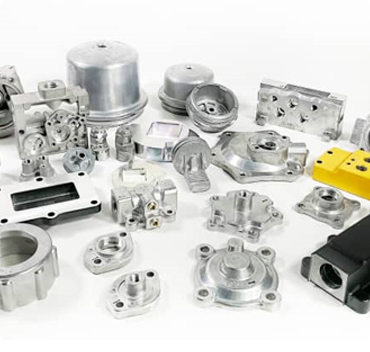When it comes to manufacturing, diecasting has become an essential element of efficiency and accuracy. The process is rooted in the idea of pushing the molten metal inside a mold cavity at high pressure, produces intricate and highly detailed parts that are used in a variety of sectors. It doesn’t matter if it’s aerospace, automotive electronics, electronic or any other diecasting plays an integral function in shaping contemporary manufacturing capabilities.
Diecasting is based on a basic but efficient method. The process starts with the melting of alloys made from metal until they attain a molten state. The melted metal is put into a steel mold cavity under high pressures usually ranging from a couple thousand to hundreds of hundreds of thousands of pounds for each square inch. The mold, carefully crafted to reflect the product you want forms the melting metal, forming it to a remarkable degree of precision. When it is solidified and cooled it comes out with precise dimensions, and the finer details are preserved.
One of the greatest benefits of diecasting is its capability to make intricate geometries, with no post-processing needs. The pressure that is applied by the injection process ensures the most complex features of the mold can be faithfully reproduced in the final item. This degree of accuracy does not just reduce the requirement to perform additional machining, but also improves the overall effectiveness of the production process. From complex engine parts to the delicate electronic housings Diecasting is a remarkably flexible method for the production of a variety of products with consistent high-quality.

Additionally, diecasting offers impressive material versatility, allowing many metal alloys that can be tailored to specific specifications. Aluminum, zinc and magnesium are some of the most widely used materials with distinct properties that allow them to be used in different sectors. Aluminum, which is renowned because of its thin but sturdy properties, is extensively used in aerospace and automotive industries in which weight reduction is crucial. Zinc however, on the other is a superior material for the production of complicated parts with slim walls. This makes it the preferred material for household and consumer electronic appliances. For more information please Get The Facts
In addition to its flexibility and accuracy Diecasting has also been shown to have significant environmental advantages. It produces little debris, and the excess materials are being reused and recycled in the subsequent production runs. Furthermore, the inherent efficacy is reflected in lower usage of energy compared to conventional manufacturing techniques, which further reduces its impact on the environment. Since sustainability is becoming an important element of modern manufacturing methods Diecasting has emerged as an option for manufacturing quality components that have low environmental impact.
But diecasting is not completely free of obstacles and pitfalls. Although it can produce complicated parts with high-precision Certain geometries could be a challenge because of draft angles or partsing lines that are inherent to the mold process. The design considerations must be considered for ensuring manufacturability and optimizing the effectiveness of diecasting processes. Additionally, the initial tooling cost associated with diecasting could be considerable, especially with complicated molds that require intricate features. However, these initial investments can be offset with the future benefits of high volume production and less machining needs.
